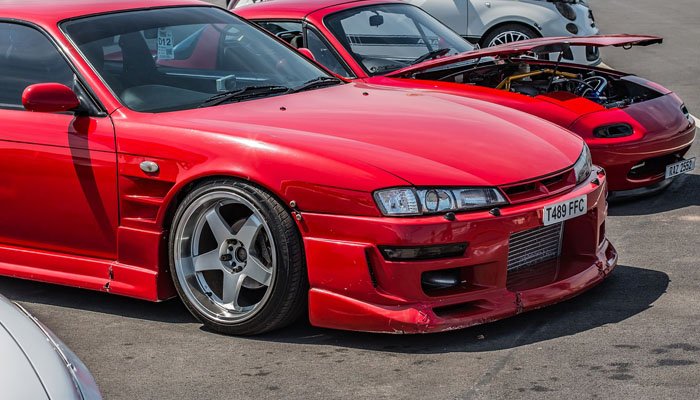Japanese car imports have captured the hearts of automotive enthusiasts worldwide, offering everything from legendary sports cars to practical everyday vehicles with exceptional reliability. Whether you’re drawn to the iconic Toyota Supra, the drift-ready Nissan Silvia, or fuel-efficient kei cars, importing directly from Japan can open doors to models never sold in your home market.
This comprehensive guide will walk you through everything you need to know about importing Japanese vehicles, from understanding regulations to finding the perfect car and navigating the import process successfully.
Why Japanese Car Imports Are Worth the Investment
Japanese domestic market (JDM) vehicles offer unique advantages that make the import process worthwhile for many buyers.
Access to Exclusive Models
Japan’s automotive market includes hundreds of models never exported to other countries. From the Honda Beat roadster to the Mazda Autozam AZ-1, these vehicles represent engineering excellence and design philosophy that differs significantly from export models. Many Japanese cars also feature higher trim levels, better interiors, and performance variants unavailable elsewhere.
Superior Build Quality and Maintenance
Japanese vehicle inspection laws, known as “shaken,” require rigorous maintenance every two years. This system ensures most cars remain in excellent condition throughout their lifespan. Additionally, Japan’s clean environment, minimal road salt usage, and careful driving culture mean imported vehicles often show less wear than similar-aged domestic cars.
Competitive Pricing
Japan’s rapid vehicle depreciation and cultural preference for newer cars create opportunities for significant savings. A well-maintained vehicle that might cost $30,000 domestically could be imported for $15,000-$20,000, including shipping and fees.
Reliability and Longevity
Japanese manufacturers like Toyota, Honda, and Mazda have built reputations for producing vehicles that run reliably for decades. This reliability extends to JDM-only models, making them smart long-term investments.
Understanding Import Regulations and Compliance
Before importing any vehicle, understanding your country’s regulations is crucial for a successful transaction.
The 25-Year Rule (United States)
The United States requires imported vehicles to be at least 25 years old to bypass Federal Motor Vehicle Safety Standards (FMVSS) compliance. This rule means 1999 and older Japanese cars can be imported without extensive modifications. However, vehicles must still meet EPA emissions standards or qualify for exemptions.
Canadian Import Requirements
Canada allows imports of vehicles 15 years or older, making it an attractive market for Japanese car enthusiasts. All imports must pass a federal inspection and meet Transport Canada’s safety standards. Some provinces have additional requirements, particularly regarding emissions testing.
European Union Regulations
EU countries have varying requirements, but most allow imports of right-hand-drive vehicles with proper documentation. Some countries restrict right-hand-drive vehicles to specific uses or require conversion to left-hand drive.
Documentation Requirements
Successful imports require proper documentation including:
- Original Japanese title (registration certificate)
- Export certificate from Japan
- Bill of sale
- Shipping documents
- Customs clearance paperwork
Step-by-Step Guide to Importing Your Japanese Car
Importing a vehicle involves multiple steps that must be completed in the correct order.
Step 1: Research and Select Your Vehicle
Start by researching specific models, their availability, and typical pricing. Japanese auction sites like USS, TAA, and JU provide insight into current market values. Consider factors like parts availability, maintenance costs, and local service options.
Step 2: Choose an Import Partner
Select a reputable import company or agent in Japan. Look for businesses with established track records, transparent pricing, and good customer reviews. Quality importers will handle auction bidding, pre-purchase inspections, and export documentation.
Step 3: Secure Financing and Insurance
Arrange financing before beginning the import process. Some lenders specialize in imported vehicle financing, while others may require additional documentation. Contact insurance companies to ensure coverage will be available for your specific vehicle.
Step 4: Complete the Purchase
Once you’ve selected a vehicle, your import partner will handle the auction process or private sale. Review all documentation carefully and ensure you understand total costs, including fees, shipping, and estimated arrival times.
Step 5: Shipping and Customs Clearance
Vehicles typically ship via container or roll-on/roll-off (RORO) service. Container shipping offers better protection but costs more. Your import partner should coordinate with shipping companies and provide tracking information.
Step 6: Domestic Compliance and Registration
Upon arrival, vehicles must clear customs and undergo any required inspections. In the United States, this includes EPA and DOT processing. Some states require additional safety or emissions testing before registration.
Popular Japanese Import Models and Where to Find Them
Understanding which models are available and where to find them helps streamline the import process.
Iconic Sports Cars
The Toyota Supra, Nissan Skyline GT-R, and Mazda RX-7 remain among the most sought-after imports. These vehicles command premium prices but offer exceptional performance and strong resale values. Auction houses like USS frequently feature these models, though pristine examples sell quickly.
Practical Everyday Vehicles
Japan’s kei car category includes ultra-compact vehicles like the Honda Acty, Suzuki Carry, and Daihatsu Hijet. These practical vehicles offer excellent fuel economy and are perfect for urban environments or specialized commercial use.
Unique Specialty Vehicles
Japan produced numerous specialty vehicles including the Nissan Figaro, Honda Beat, and Mazda Autozam AZ-1. These cars represent Japanese design philosophy and engineering creativity, often featuring advanced technology and distinctive styling.
Finding Quality Vehicles
Japanese auction houses remain the primary source for imported vehicles. USS (United Service Station) is the largest, followed by TAA (Trans Audio Appliances) and JU (Japan Used Motor Vehicle Association). Each auction house has different specialties and clientele.
Private dealers in Japan also offer vehicles, particularly rare or modified examples. Building relationships with reputable dealers can provide access to vehicles before they reach auction.
Cost Breakdown and Financial Planning
Understanding all costs involved in importing helps avoid surprises and ensures proper budgeting.
Purchase Price and Auction Fees
Vehicle costs vary widely based on model, condition, and rarity. Budget auction cars might cost $3,000-$8,000, while rare sports cars can exceed $50,000. Auction fees typically add 5-10% to the winning bid.
Shipping and Logistics
Shipping costs depend on vehicle size, destination, and service type. Container shipping typically costs $1,500-$3,000, while RORO service costs $800-$1,500. Additional fees include port handling, documentation, and inland transportation.
Government Fees and Taxes
Import duties, taxes, and processing fees vary by country and vehicle value. United States imports face a 2.5% duty on cars and 25% on trucks. Canada charges 6.1% duty plus applicable taxes. These fees are calculated on the vehicle’s declared value plus shipping costs.
Compliance and Registration Costs
Domestic compliance costs include inspections, modifications, and documentation fees. Budget $1,000-$3,000 for compliance activities, depending on your location and vehicle requirements.
The Future of Japanese Car Imports
Japanese car imports continue evolving as more vehicles become eligible and market dynamics shift.
Emerging Eligible Models
The 25-year rule means exciting 1990s models are becoming available annually. The Toyota Chaser, Nissan Stagea, and various sports car variants will soon be eligible for import. This creates opportunities for enthusiasts to acquire vehicles before prices increase.
Market Trends and Pricing
Strong demand for Japanese imports has driven prices higher, particularly for iconic models. However, the depth of Japan’s used car market means opportunities exist for patient buyers. Less popular models often represent excellent value propositions.
Technology and Process Improvements
Digital platforms and improved logistics are making imports more accessible. Online auction viewing, virtual inspections, and streamlined documentation processes reduce barriers for individual importers.
Making Your Japanese Import Dream a Reality
Japanese car imports offer access to unique vehicles that combine reliability, performance, and character unavailable in domestic markets. While the process requires patience and careful planning, the reward of owning a piece of automotive history makes the effort worthwhile.
Success depends on thorough research, working with reputable partners, and understanding all regulatory requirements. Take time to learn about your chosen model, budget appropriately for all costs, and prepare for the registration process in your area.
The Japanese import market continues growing as more vehicles become eligible and enthusiasts discover the appeal of JDM cars. Whether you’re seeking a weekend sports car or a practical daily driver, Japan’s automotive market offers options that can transform your driving experience.
Start your import journey by researching specific models, connecting with established importers, and understanding your local requirements. With proper preparation and realistic expectations, you’ll soon be enjoying the unique pleasure of owning an authentic Japanese vehicle.




